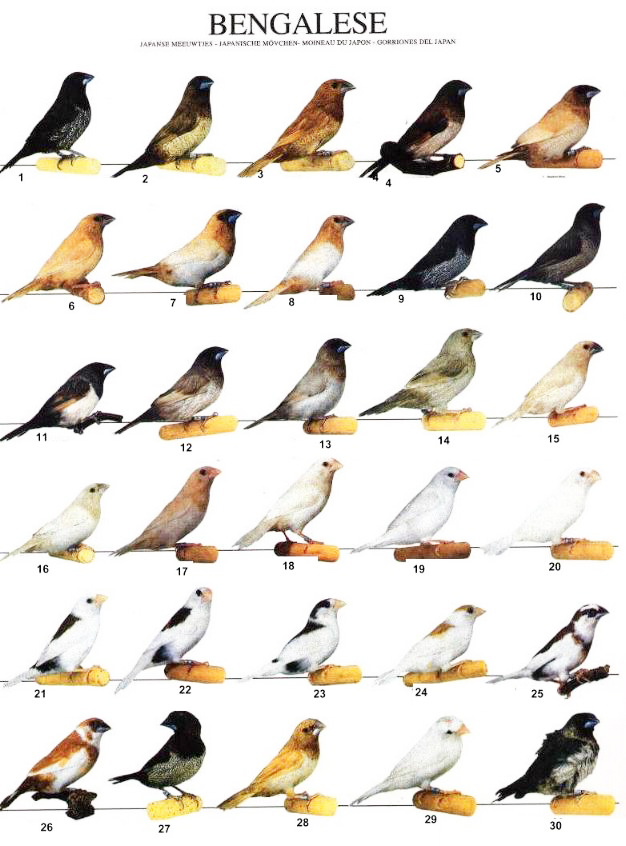
There have always been two common colours of the pied Bengalese Mannikin in Australia one is the Chocolate Bengo and the other is called the Fawn or Ginger. In Australia our Ginger Bengalese generally looks more "Fawn" than "Ginger" where the common variety has a distinct tan-like colour. In the Selfs that I have seen so far this type of colour is often represented like the image to the right here and show hints of orange-like tones in them (image from outside Australia).
I am learning quickly that there is an infinite amount of variation in colour between individual Bengalese and the subtle differences in the amount of RED, BROWN and DARK BROWN or lack there of contribute to this.
In Europe the standard for Ginger is much darker than the previously mentioned colour and is also called Red/Brown (Shown Right), to the point that a Bengo with colourings as the top picture is often named a Dilute Fawn or Dilute Red/Brown.
The Colour Standard proposed by the Bengalese Breeders Society in Australia
(Click Here to see Standard) states that the Fawn or Ginger colour is to be a
dark red brown. In my opinion the finch shown here to the right is an example of this.
Another thing to note is that a key distinguishing factor of the Fawn or Ginger Self Bengalese Mannikin is that the top half of the beak is of a similar colour to that of the bottom half. You can see examples of this in the top two images.
One of my Chestnut Selfs shows some distinctive Red/Brown colourings but can can not be called a Ginger because of its dark upper beak. There are some references on the net about a Fox Red Bengo and I gather that this foreign Bengo has been bred selectively for the most Red colourings. .....Sounds interesting ;-)


















